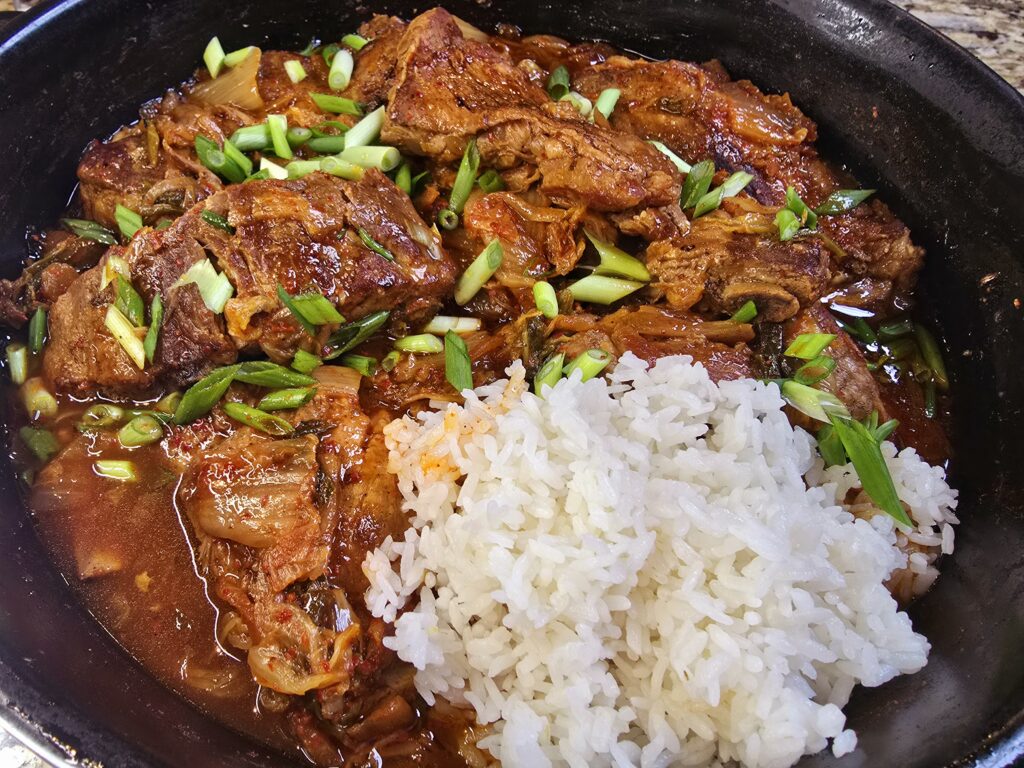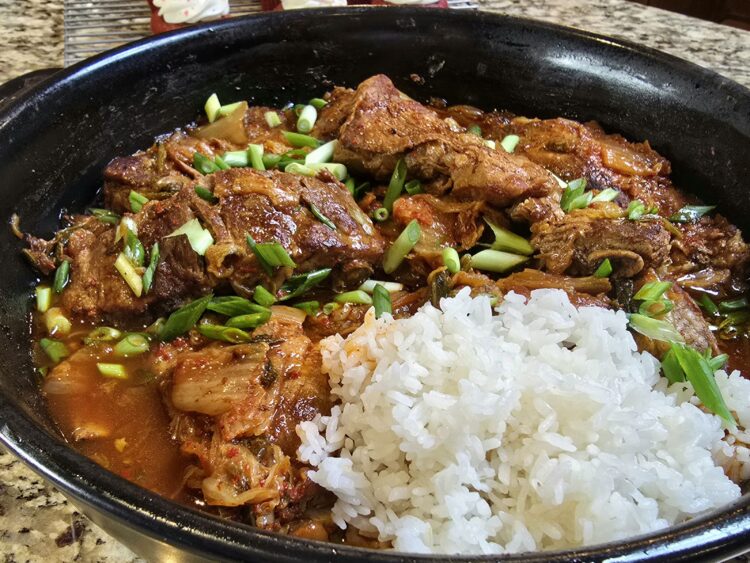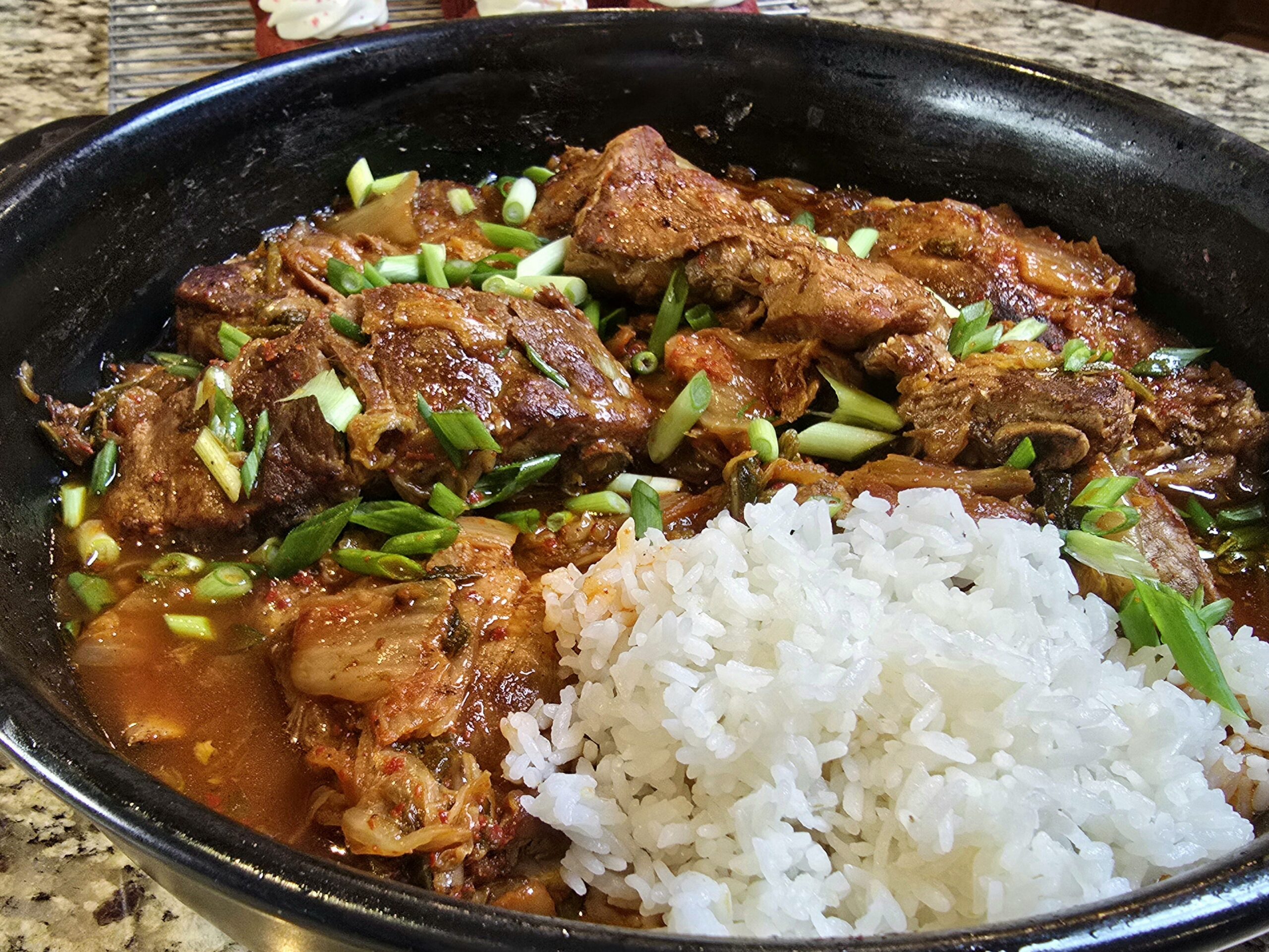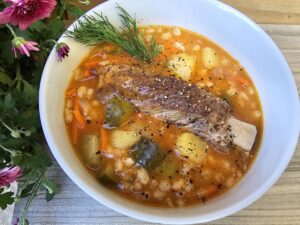The arrival of Squid Game Season 2 on Boxing Day was the perfect excuse to dive back into the delicious world of Korean food. After binge-watching the entire season in one day (how could we not?), a contestant’s mention of kimchi jjigae (김치찌개) sent my cravings into overdrive. Pork kimchi stew is a Korean classic, known for its bold, tangy flavors and comforting warmth.
Traditionally, pork belly is used, and the ribs are boiled, rinsed, and then boiled again in the stew. But in this recipe, we take a different route—braising the pork ribs in the oven for an incredibly tender, fall-off-the-bone texture. The ribs absorb the flavors of the broth, kimchi, and spices while the oven does all the work. The result is a deeply flavorful stew with rich, meaty ribs that melt in your mouth.
Kimchi jjigae is a dish that embodies Korean cuisine’s soul. It’s rustic yet sophisticated, spicy yet comforting, and always best served steaming hot over a bowl of rice. The tangy, umami-packed kimchi pairs beautifully with the juicy pork ribs, creating a stew that’s as satisfying as it is addictive.
If you’re looking for a twist on tradition with all the authentic flavors intact, this braised rib version of kimchi jjigae is a must-try. And after a long day of dramatic twists and turns on Squid Game, it’s the ultimate companion to a cozy night in.
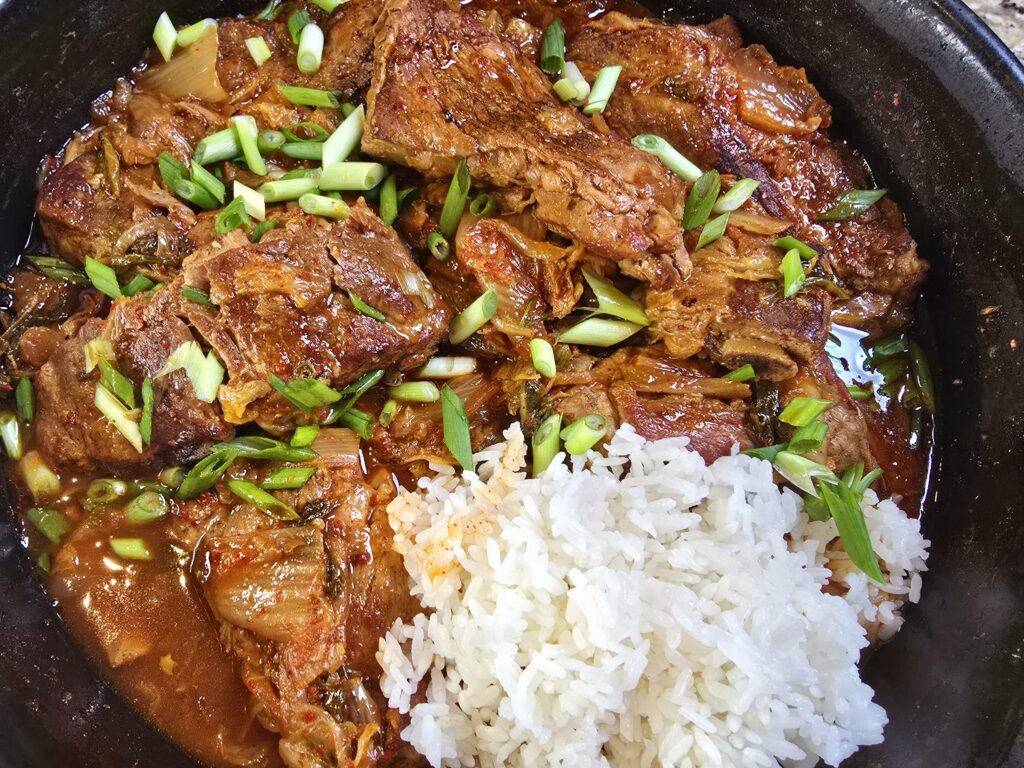
Kimchi Pork Rib Stew (김치찌개, Kimchi Jjigae)
Ingredients
2–3 lbs pork ribs (cut into individual pieces if they are longer, or 3 to 4 inches, for those smaller 1.5 inch ribs)
2 cups well-fermented kimchi (chopped into bite-sized pieces)
1/2 cup kimchi juice (optional, if your kimchi has enough liquid)
1 medium onion, chopped
4 cloves garlic, minced
1–2 teaspoons gochugaru (Korean chili flakes, adjust to spice preference)
2 tablespoons soy sauce
1 tablespoon gochujang (Korean chili paste)
1 tablespoon sesame oil
1–2 teaspoons honey (optional, for sweetness)
1 block tofu, cut into thick slices (optional)
1–1 1/2 cups chicken broth (or beef/pork broth for richer flavor)
2 bay leaves
2 tablespoons olive oil (divided)
Salt and pepper to taste
2–3 scallions, chopped (for garnish)
Directions
- Preheat and Prepare the Ribs:
Preheat oven to 300°F (150°C).
Slice the ribs into individual pieces and pat them dry with paper towels. Season generously with salt and pepper. - Sear the Ribs:
Heat 1 tablespoon olive oil in a large Dutch oven over medium heat. Add the chopped onions and cook until softened, about 10 minutes. Remove onions to a plate and set aside.
Increase heat to high and add the remaining tablespoon of olive oil. Brown the ribs in a single layer on all sides (work in batches if needed). - Start the Braise:
Return the cooked onions to the pot with the ribs. Add bay leaves and 1 cup of chicken broth (or enough to cover the ribs by about 1/4 inch). Bring the mixture to a boil, cover, and transfer the Dutch oven to the preheated oven.
Braise for 1.5 hours. - Add Kimchi and Build Flavor:
After 1.5 hours, carefully remove the pot from the oven. Add the chopped kimchi, kimchi juice (if using), minced garlic, gochugaru, soy sauce, gochujang, and honey. Stir gently to distribute the seasonings.
If the liquid level looks low, add a little more broth to maintain moisture (but don’t fully submerge the ribs). - Finish Braising:
Return the pot to the oven and continue braising for another 30–60 minutes until the ribs are tender and falling off the bone, and the flavors are well combined. - Add Tofu (Optional):
If using tofu, add the sliced tofu to the pot during the last 10–15 minutes of cooking to warm through and absorb some of the stew's flavor. - Garnish and Serve:
Remove the Dutch oven from the oven. Stir in sesame oil for a nutty aroma.
Garnish with chopped scallions and serve hot. This dish pairs beautifully with steamed rice.
